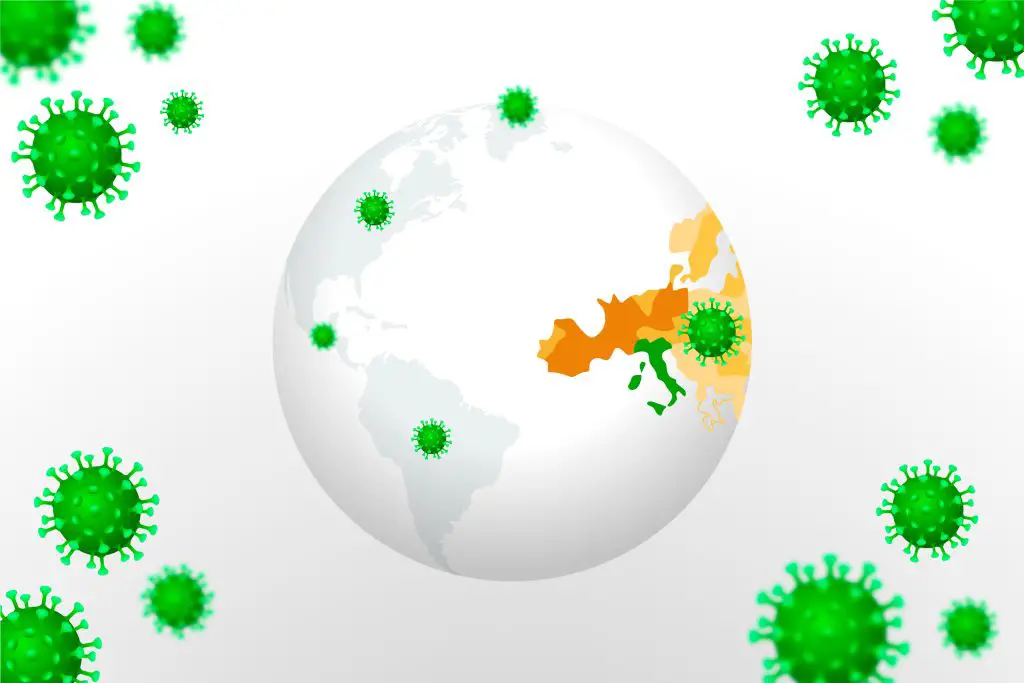
Typhoid Fever and Sexual Transmission: What You Need to Know
-
- Dr. Junaid Arshad
- March 25, 2023
- 0 comments
Table of Contents
Does typhoid spread through sex or kissing?
“Typhoid fever is primarily spread through the consumption of contaminated food or water, or through close contact with someone who is infected and shedding the bacteria through their feces. While it is not commonly associated with sexual contact or kissing, a study conducted at the Ohio Department of Health suggested that oral-anal and oral-penile contact could potentially transmit the disease.[1]”
What is Typhoid Fever?

Introduction
Enteric fever, also known as typhoid fever, is a potentially severe illness that affects multiple body systems and is a significant public health concern, especially in developing nations.
It is caused by Salmonella typhi and Salmonella paratyphi, and the term enteric fever is used to refer to both types of fever. [2]
Paratyphoid fever has similar clinical features to typhoid fever and is often used interchangeably with enteric fever or typhoid fever.
Typhoid fever is a major cause of morbidity and mortality, particularly in crowded and unhygienic areas, although its occurrence has been reduced through comprehensive research and public health interventions.
The disease progression ranges from early gastrointestinal symptoms to non-specific systemic illness, which may lead to multiple complications.
The spread of Salmonella is often associated with the “four Fs” – flies, fingers, feces, and fomites.
Typhoid fever typically presents with a step-wise pattern of fever (i.e., rising and falling alternatively), followed by headache and abdominal pain.
What Causes Typhoid?

Typhoid fever is mostly caused by a type of bacteria called Salmonella typhi and another type called Salmonella paratyphi. They both belong to a family of bacteria called Enterobacteriaceae.
Salmonella is a group of bacteria that has two types called Salmonella enterica serovar and enteritidis.
Scientists use a technique called multiplex quantitative polymerase chain reaction (PCR) to tell them apart. [3]
Both Salmonella typhi and Salmonella paratyphi (A, B, C) are types of Salmonella enterica bacteria.
Nontyphoidal salmonella (NTS) is a more common type of Salmonella that mostly causes stomach problems in children.
How is Typhoid Transmitted?

Salmonella is usually spread through contaminated water and food that has been undercooked.
It can also be passed from one person to another through things that have been touched by an infected person.
It is more common in places where there are a lot of people living in small areas and the sanitation is not good.
Salmonella only lives in humans and is passed from one person to another.
The most common sources of salmonella are chicken and eggs, but sometimes turtles can also carry it.
In a study done in China, it was found that 57% of the samples taken from chicken slaughterhouses were positive for salmonella.[4]
The bacteria that normally live in our gut help protect us from getting sick.
But if we take antibiotics like streptomycin, it can kill these good bacteria, making it easier for harmful bacteria to cause infections like typhoid fever.
Also, if we don’t eat enough healthy food, our gut bacteria can become weaker and we can get sick more easily.
So, when we take strong antibiotics and don’t eat well, we are more likely to get typhoid fever.
Epidemiology of Typhoid

The United States doesn’t have many cases of typhoid fever and paratyphi A – only around 350 confirmed cases of typhoid fever and less than 100 paratyphi A cases per year since 2008.
However, in many other parts of the world, these diseases are still a big problem.
Every year, there are over 26 million cases of typhoid fever and 5 million cases of paratyphoid infection worldwide, which cause about 215,000 deaths. [5]
Typhoid fever is more common in low and middle-income countries in south-central Asia and southern Africa than in developed countries.
In developed countries, the majority of cases are carried by travelers returning from endemic areas or visiting friends and relatives who are at a higher risk due to their potential lack of caution when it comes to food and water sources.
Those who do not seek vaccination or pre-travel consultation are also at a higher risk of contracting typhoid fever.
The prevalence of typhoid fever is higher in temperate and tropical climates and is directly linked to sanitation, sewage, and water treatment systems.
Salmonella typhi is more prevalent than Salmonella paratyphi, and Salmonella paratyphi A is more prevalent than Salmonella paratyphi B.
Despite a rapid increase in population, pollution, and a shortage of pure drinking water, the number of new cases of typhoid fever has been increasing worldwide.
However, death rates have decreased due to extensive research, changes in treatment modalities, and the development of new drugs, despite growing multidrug resistance.
In the age of routine antibiotics, classic presentations are not always evident, with only 10% of cases in the United States showing splenomegaly and 1.5% showing rose spots.[6]
How long does typhoid stay in your body?

Around 4% of individuals who contract typhoid fever can develop into chronic carriers.
These individuals do not show any symptoms after receiving acute treatment, but they may release Salmonella bacteria in their feces for up to a year, or in some cases, in their urine less frequently.[7]
When is typhoid fever most contagious?
Typhoid fever is most contagious during the first few weeks of the illness, particularly during the first week of symptoms.
This is when the concentration of Salmonella bacteria in the infected person’s bloodstream is highest, making it easier for the bacteria to spread to other people through contaminated food, water, or close contact with the infected person.
Once the infected person receives appropriate antibiotic treatment, the risk of transmitting the disease to others is significantly reduced.
How to Prevent the Spread of Typhoid?
There are several measures that can be taken to prevent the spread of typhoid fever:
Vaccination
Getting vaccinated against typhoid fever is one of the most effective ways to prevent the disease.
There are two types of typhoid vaccines available – one is an oral vaccine that is given in multiple doses, while the other is an injectable vaccine that provides long-term protection.
Practice good hygiene
Washing hands frequently with soap and water is essential in preventing the spread of typhoid fever. It is particularly important to wash hands before handling food, after using the bathroom, and after changing a diaper.
Safe food and water
It’s important to consume safe food and water to prevent typhoid fever.
Avoid consuming raw or undercooked foods, particularly meat, fish, and shellfish. Drink only bottled or boiled water, and avoid ice made from tap water.
Sanitation
Ensure that sanitation is maintained at all times. Dispose of sewage and garbage appropriately, and ensure that food preparation areas are clean and hygienic.
Avoid close contact with infected individuals
If you know someone who has typhoid fever, it’s important to avoid close contact with them until they are no longer contagious. This includes not sharing utensils, food, or drinks with them.
By following these preventive measures, the spread of typhoid fever can be minimized, and the risk of contracting the disea
Other FAQs About the spread of typhoid

#1. Can Typhoid spread through hugs?
No, Typhoid fever is primarily spread through ingestion of contaminated food or water, or close contact with an infected person who is shedding the bacteria in their feces or urine. It is not known to be spread through casual contact such as hugging, shaking hands, or sharing utensils or food with an infected person.
#2. Does typhoid spread by sneezing?
No, Typhoid fever is not known to be spread through respiratory droplets from sneezing or coughing.
#3. Can typhoid spread by using the same bathroom?
Typhoid fever can potentially spread through the use of a contaminated bathroom, particularly if the infected person has not washed their hands properly after using the bathroom. The bacteria can be present in the infected person’s feces or urine, and if it is not properly disposed of, it can contaminate the bathroom surfaces. Therefore, it is important to practice good hygiene, and ensure that bathroom surfaces are cleaned and disinfected regularly to prevent the spread of typhoid fever.
#4. Can Typhoid be Transmitted through Sperm?
There is no evidence to suggest that typhoid fever can be transmitted through semen or sperm.



